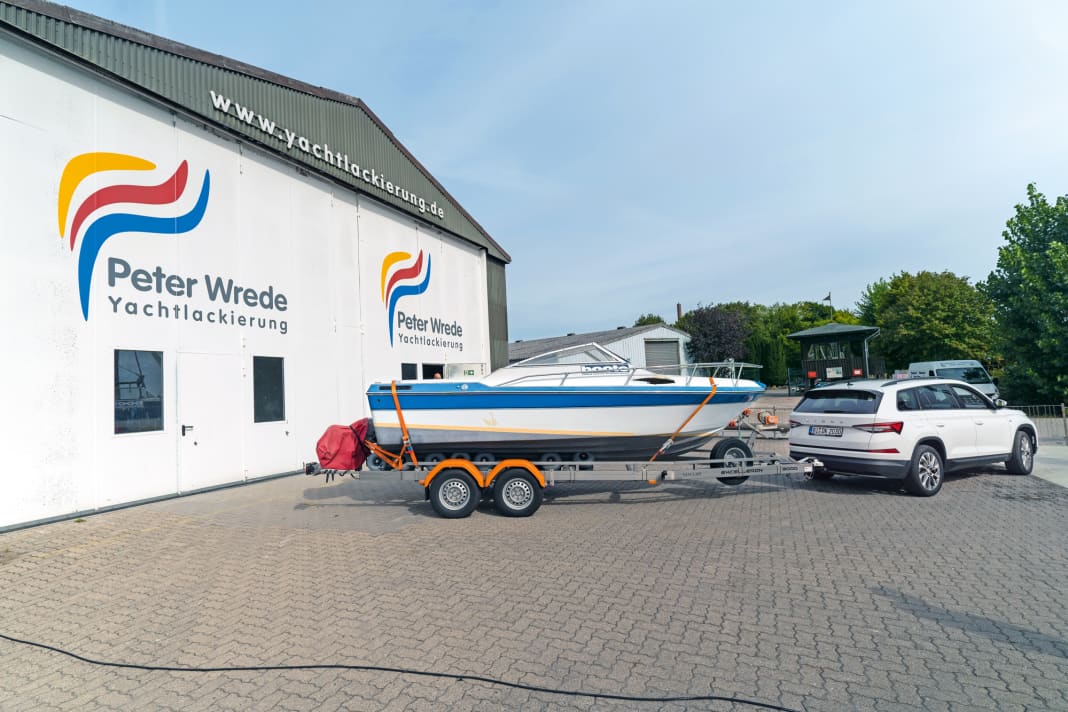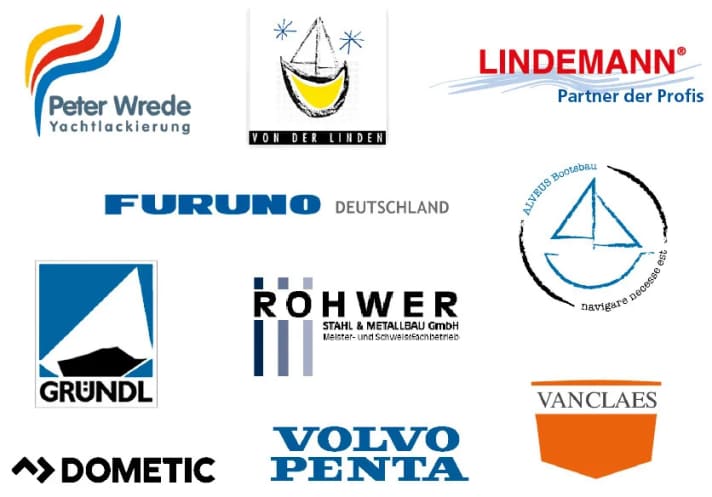





All episodes of the refit project:
- Part 1: Stocktaking
- Part 2: Replacing the rear view mirror
- Part 3: The underwater hull
- Part 4: GRP repairs
- Part 5: Antifouling coating
- Part 6: The motor foundation
- Part 7: The stringer system
- Part 8: The new engine
- Part 9: The new tank
- Part 10: The interior fittings
- Part 11: The interior work continues
- Part 12: The side panelling
- Part 13: Surface treatment and colour
Now that the interior of our Conquest 1950 CC is almost complete, it's time to turn our attention to the exterior of the boat. The gelcoat has been badly affected by the sun over the last 30 years. The boat has also had to put up with the odd contact with the quay wall or a dolphin, which of course shows. To change that, we head to the Schlei. Or rather to Kappeln to Peter Wrede Yachtlackierungen. Now that the underwater hull has been extensively refurbished and blasted, it's time for the above-water area. We already had a lot of questions in our heads on the outward journey. What colour should the boat be painted, what is the best way to seal the old screw holes and what does the boat actually look like without the rubbing strake and railing?
All questions were addressed during a discussion with project manager Florian Brix. It quickly became clear that it wasn't as simple as we thought. Opinions differed on the choice of colour. Some wanted a classic white, others preferred a light shade of grey.
Still a lot of work to do before the painter can start
But Florian doesn't want to take the boat that far yet. His objection: there is still a lot of work to be done, so it will spend a few more hours on the motorway and pass through many hands. There is a high risk of stone chips or damage. It therefore makes more sense to coat the boat up to the primer, so that the painter is one of the last to work on the project. All attachments are then fitted. This protects the paintwork and avoids having to touch up any damage. Good thinking!
Once all questions had been clarified, the shipyard got straight down to work. The first step was to sand down all the gelcoat surfaces and remove old coatings such as decorative strips or stickers. Only then is it possible to gain a full overview of the damage. GRP damage was sanded conically and laminated if necessary. Epoxy and vinyl ester resins with glass fibre mats are used here. After the repair, the damaged areas had to be filled and sanded. A thick-layer primer was sprayed to fill smaller pores and unevenness. Thick film primer has a high build and filling capacity and is therefore particularly suitable for covering fillers. The Ultra Build epoxy primer from the AWLGRIP brand was used.
Heat treatment for the Conquest 1950 CC
To optimise the curing of the materials used, our Conquest was tempered for 12 hours at 35 degrees. Tempering is a heat treatment in which the boat is heated for an extended period of time. This ensures that the resin or lacquer system fully hardens and reaches its final strength. This is followed by intermediate sanding by hand and machine as well as renewed priming with epoxy primer using a high-pressure spraying process. In the next part of the series, we return to von der Linden in Wesel. Here, the remaining work is completed and the side deck windows are given a new shape.
The BOOTE Refit project is supported by

Other parts of the Refit series from BOOTE:
- Part 1: Stocktaking
- Part 2: Replacing the rear view mirror
- Part 3: The underwater hull
- Part 4: GRP repairs
- Part 5: Antifouling coating
- Part 6: The motor foundation
- Part 7: The stringer system
- Part 8: The new engine
- Part 9: The new tank
- Part 10: The interior fittings
- Part 11: The interior work continues
- Part 12: The side panelling
